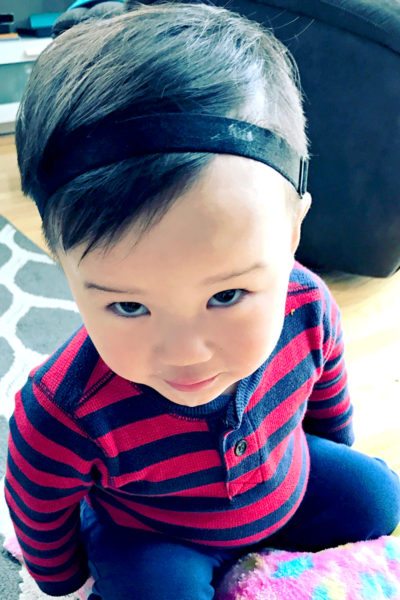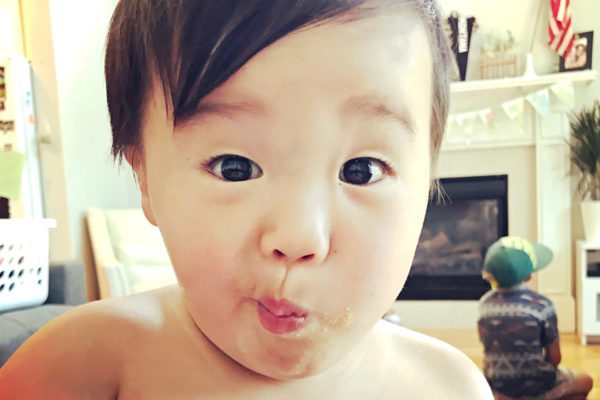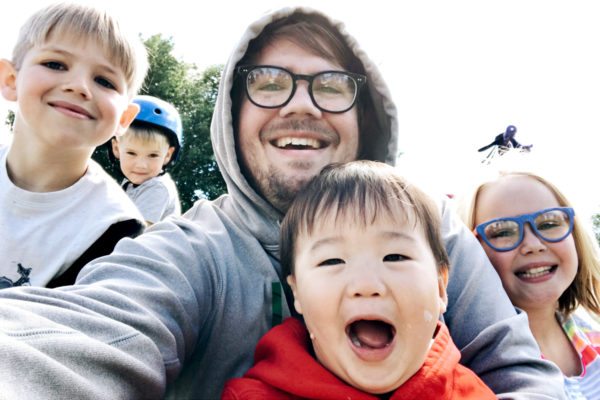(Let me start by saying I are so far from an expert on the topic of microtia and atresia. Just know that I am a loving mother with a son who happens to have this special bonus feature, not an ENT doctor.)
When my husband and I filled out a medical checklist in February of 2016 we were scared and not totally informed. I didn’t even know what a half of the conditions were and spent lots of time googling them. (Which, as most of us know, isn’t always the best option.) We would basically google the condition, and then scroll through images, read a mayo clinic article and webMD, and then check yes or no on the checklist.
If I were to do this over it would look much different. But, alas, the google check of conditions led us to where we are now.
I knew what microtia and atresia were, I just didn’t know what it was called. I actually didn’t have it checked initially because it sounded scary, but after re-reading the checklist for the forty-fifth time I added it.
Microtia means “little ear” and that is basically what it is. Our son’s right ear is malformed, and has no external opening. Some people notice it right away, and some do not. Sometimes microtia exists as a stand alone condition, sometimes it is one symptom of a syndrome, and sometimes it comes with kidney or heart issues due to the nature of the time the ear is formed in utero in relation to the other internal organs. Sometimes the extra fun part of adoption, and life in general, is the unknown.
We went in assuming Mathis could not hear in the affected side with the possibility of having other related issues. As in all things, adoption included, only time would tell.
When we met Mathis up November 28th 2016, we were in love with all parts of him. His sweet lips, his big brown eyes, his teeny little legs, and his small ear. To us he seemed perfectly formed, and we realized that whatever this need entailed we just didn’t care. When you see a need in a file, and research all the different scenarios it seems scary even if the need you suspect is minor.
I had literally gone over every scenario I could with this need only to realize that when you hold your child in your arms, you realize that they are children first who just have medical needs. They are not their medical file.
We were so grateful for him that all the possible scenarios I had looked over were a worry no more. Whatever turned up, we would deal with.
When we got home, we ran through all the doctors appointments as we all do. Looking at blood work and stool samples numerous times. Pediatricians, optometrist, dental visits were also part of the first few months home. We ordered a renal ultrasound to check kidneys, and got a good report on all. He went to a pediatric ENT and audiologist.
The results were what we had anticipated. He had major loss on his small ear and minor loss on his typical ear. He was a candidate for a bone anchored hearing aid (BAHA). With the help of our early intervention program, we got a loaner hearing aid which he basically wore for one week then refused to wear entirely. It now looks so cute sitting on our kitchen counter most days. You can lead a two year old to a BAHA but you can’t make him wear it.

We have been home six months with our son Mathis. He is all things good in this world: funny, handsome, feisty, brave, and joyful. When I think of all the words I use to describe him I rarely think of the one we checked on our medical check list which ultimately led us to him – microtia.
I imagine every adoptive parent who ever reads this would think the same thing: my child is not their circumstances.
The future for Mathis and his need are still up in the air. He will probably need a minor surgery to repair a small hole called a preauricular sinus because it keeps getting infected and smells weird. I don’t want the poor kid to have a weird smelling ear.
He may choose to have reconstruction done on his ear, but we will never make him. He may choose to have a bone anchored hearing aid implanted so he doesn’t have to wear a band as he gets older. All these things we want him to have input on so we are choosing not to make any permanent changes to his body without his consent. The nature of microtia and atresia isn’t urgent, and so we are lucky enough to have the freedom to wait.

One thing I know for sure that Mathis will have to deal with is kids making fun of him. Any visible difference, even as small as his sweet ear is low hanging fruit for teasing. Our best defense against that is reminding him every single day of his life who he really is. And maybe buying some cool hats, and helping him get a fun shaggy hair cut, and sitting with him when he feels the sting of being different.
This “need” he has is nothing. Even if he would have had a much more complicated version of this, in the end it still would have been nothing that mattered. If he would have had any of the “worst case” scenarios I looked up, it wouldn’t have been the worst case at all.

The real worst case would have been never knowing him.
In the end I think all of us parents agree that not knowing our child is truly the worst case scenario, and everything else is just part of being a parent.
We are grateful for each and every part of our son. We hope someday he can be just as proud of himself as we are.
He is a treasure.
– guest post by Julie

























You are a treasure. 💚 Love this article.
Hi
Our son also has two little ears and wears a headband with two aids. At age 6 he a happy little boy and your son is adorable